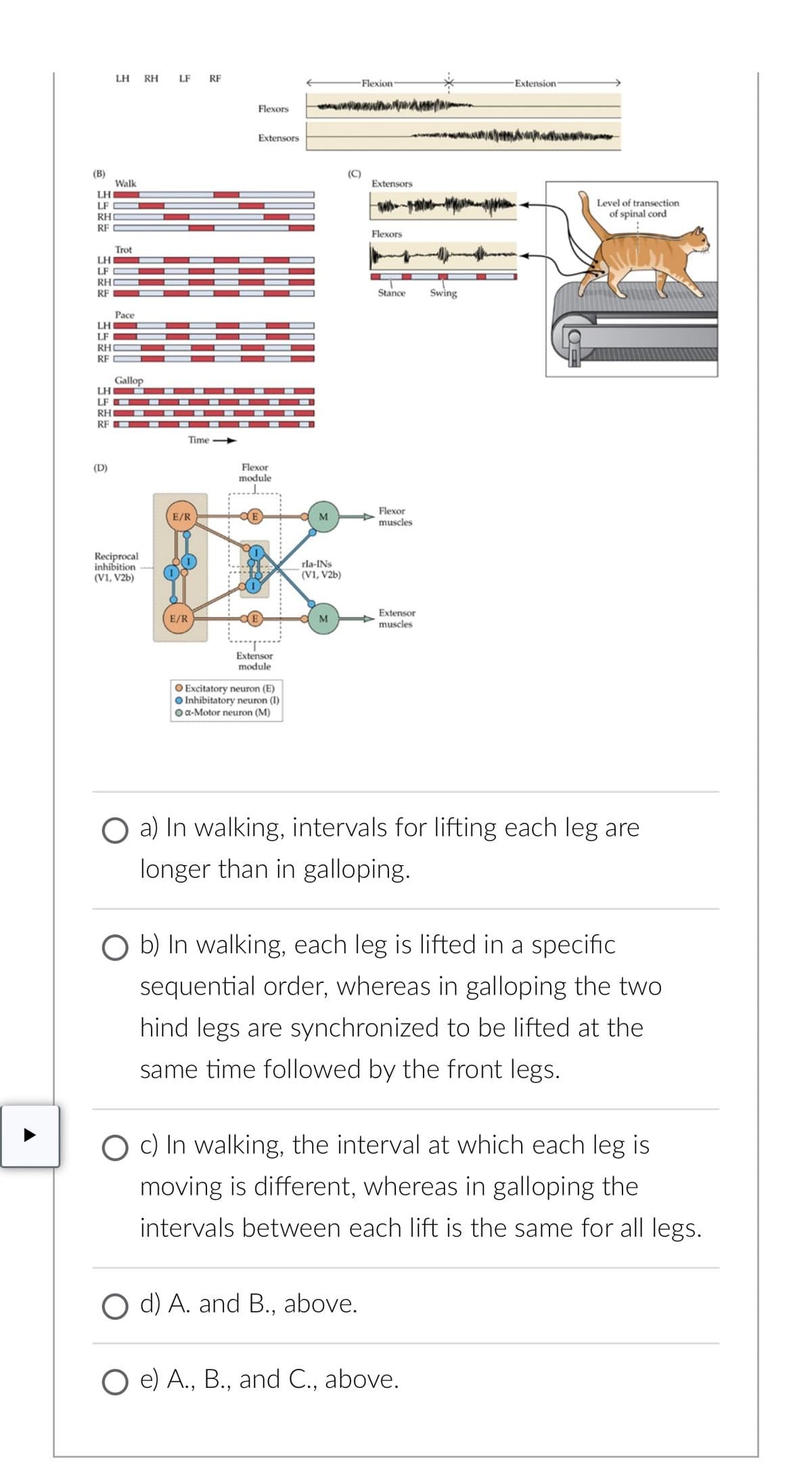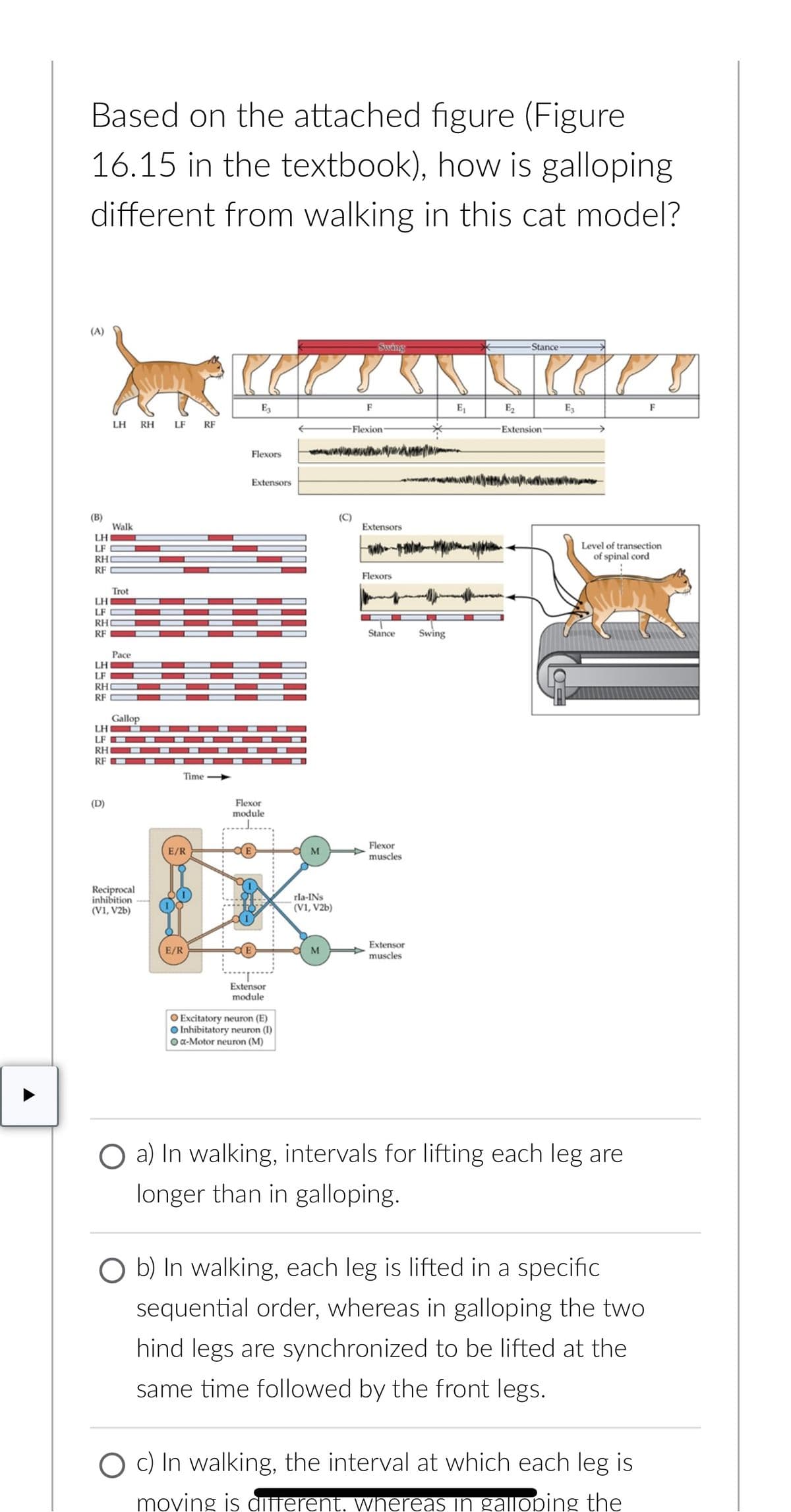LH RH LF (B) LH LF Walk RHI RF Trot LH LF RH RF LH RF HI Flexors Extensors -Flexion: -Extension- (C) Extensors Flexors Pace Stance LF RHI RF Gallop LH LF RH RF Time (D) Reciprocal inhibition (V1, V2b) Flexor module Flexor E/R E M muscles E/R Extensor module O Excitatory neuron (E) Inhibitatory neuron (I) Oa-Motor neuron (M) rla-INS (V1, V2b) M Extensor muscles Swing Level of transection of spinal cord O a) In walking, intervals for lifting each leg are longer than in galloping. Ob) In walking, each leg is lifted in a specific sequential order, whereas in galloping the two hind legs are synchronized to be lifted at the same time followed by the front legs. O c) In walking, the interval at which each leg is moving is different, whereas in galloping the intervals between each lift is the same for all legs. d) A. and B., above. O e) A., B., and C., above.
Histology
Histology is the microanatomy method and a branch of biology that studies the anatomy of tissues. It includes viewing tissue in a magnified view under the microscope. Microanatomy also includes the process of study of organs called organology and the study of cells called cytology. Histopathology is a branch of biology that includes microscopic identification of diseased tissue. The field of histology comprises the preparation of the tissues and collection of cells as specimens for examination under the microscope. These processes are done by technicians like histologists, histotechnicians, and biomedical scientists. Histopathology is the diagnosis and research of tissue diseases that require the examination of tissues and/or cells under a microscope. Histopathologists are in charge of determining tissue diagnosis and assisting clinicians in managing a patient's care.
Endocrine System
Human body functions due to the collective work of the organ systems. One of them is the endocrine system. It is a chemical messenger system constituting the hormones directly released by the endocrine glands into the circulatory system. The study of this system is known as endocrinology. The word 'endon' means inside, and 'crine' means secrete, making the word "endocrine."


Trending now
This is a popular solution!
Step by step
Solved in 4 steps







